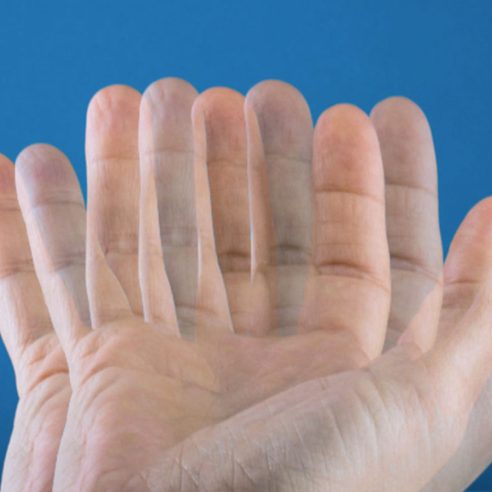
Ocular toxoplasmosis: Transmission, symptoms and treatment
It is possible that you may also be experiencing ocular toxoplasmosis without knowing it. This retinal disorder is extremely common in our century and is manifested by eye discomfort and blurred vision.
What causes ocular toxoplasmosis?
Ocular toxoplasmosis is an ophthalmological disorder caused by infestation of an organism with the parasite Toxoplasma gondii.
About the Toxoplasma gondii parasite
Toxoplasma gondii is a parasite with three distinct genotypes:
- Type II-I – is most common in animals;
- Type II – is associated with chronic infection in humans;
- Type I – is mainly involved in congenital toxoplasmosis (more on this in the section “Types of ocular toxoplasmosis”).
The protozoan Toxoplasma gondii has three distinct forms:
- Trophozoite – occurs during the acute form of the diseases;
- Cyst – is the latent infection that persists in the body
- Oocyst – found in the organism in which the parasite has a full developmental cycle.
Cats are the most common host for this parasite. However, Toxoplasma gondii can also be found in cows, pigs, sheep, mice and other animals, which become intermediate hosts and thus means of contamination for the human body.
Once inside the body, Toxoplasma gondii can:
- Remain dormant and settle in different tissues (Toxoplasma gondii has a predilection for nervous tissue);
- Take an active form and circulate freely through the blood. This form leads to infection and tissue destruction.
How is ocular toxoplasmosis transmitted?
There are several ways in which the parasite Toxoplasma gondii can be transmitted to humans.
- The first and most common is contamination through animal feces. To avoid this, good hand hygiene is recommended after every interaction with animals in the home and household.
- Another way of contamination is the ingestion of raw or undercooked meat. This can be pork, poultry, beef or mutton. Toxoplasma gondii is sensitive to temperatures above 50°C, so any undercooked meat can become a source of infection.
- The most dangerous way of transmission is transplacental, if the mother becomes infected with the parasite during pregnancy.
- Other ways people can acquire Toxoplasma gondii are blood transfusions and organ or tissue transplants.
How is ocular toxoplasmosis diagnosed?
Most of the time, ocular toxoplasmosis is difficult to notice. Regular ophthalmological examinations are therefore recommended to prevent and treat the eyeball infection. Among the most common specialist investigations are:
- Ophthalmological examination
- Blood tests
- Specific blood antigen assays to confirm the presence of Toxoplasma gondii parasite infection;
- The presence of anti-Toxoplasma antibodies suggests either an old latent infection or a reactivation.
- Fundus examination – to indicate the underlying lesion (i.e. the retinochoroiditis outbreak).
All these tests are mandatory even in the absence of ocular symptoms.
In babies, investigations are more thorough to determine maternal and fetal antibodies:
- Sabin-Feldman dye test;
- Direct agglutination test;
- Indirect fluorescence test.
How many types of ocular toxoplasmosis are there?
Ocular toxoplasmosis can be congenital or acquired.
Congenital ocular toxoplasmosis
Congenital toxoplasmosis is also known as “toxoplasmosis chorioretinitis of the newborn” and is an eye disease that affects the body at the brain level, manifested by:
- Seizures;
- Intracranial calcifications;
- Mental retardation;
and digestive level, indicated by:
- Vomiting;
- Diarrhea;
- Hepatosplenomegaly (liver and spleen disease).
Active lesions, where the parasite is found, leave behind scars which, when located in the macula, can severely affect visual acuity. In terms of ocular damage, it is estimated that in 80% of the cases the eye is affected by bilateral chorioretinitis, affecting two of the eyeball’s layers, the choroid and the retina.
Complications that can occur in mall children include:
- Uveitis;
- Cataract;
- Strabismus;
- Glaucoma;
- More severe damage can lead to optic atrophy or blindness.
Regular monitoring of children diagnosed with congenital toxoplasmosis is essential to prevent complications that can affect both the eyes and other organs.
Acquired ocular toxoplasmosis
Acquired ocular toxoplasmosis usually affects young adults and begins in an acute phase. Patients show signs of systemic infection. The disease is often unilateral, and may be followed by periods of apparent cure, after which the parasite may reactivate.
Acquired ocular toxoplasmosis is more severe in patients with autoimmune diseases or those with a weakened immune system. It is important for the ophthalmologist to monitor such cases to prevent possible complications at eyes level.
What are the symptoms of ocular toxoplasmosis?
The most common signs of this ophthalmological disorder are:
- Retinal inflammation;
- Eye discomfort;
- Blurred vision;
- Headache of ocular origin;
- Myodesopsia (the patient has the impression of seeing “flying flies”);
How is ocular toxoplasmosis treated?
Ocular toxoplasmosis is a chronic disorder in which infected patients become carriers of Toxoplasma gondii and the parasite can go from latent to active several times during life. Although this disease cannot be completely cured, there are ophthalmological treatments available to improve symptoms and prevent further complications.
- Medication: the ophthalmologist may prescribe combinations of antiparasitic medication. It is important to note that these medicines do not completely eliminate latent forms of the disease, which remain in various tissues and can be reactivated during life.
- Ophthalmic laser treatment: laser photocoagulation can be used if lesions appear on the patient’s retina. This procedure can improve symptoms and prevent disease progression.
- Surgery: recommended only in case of complications such as retinal detachment.
Schedule a specialist examination and prevent potential ophthalmological disorders. The Dr. Holhoș network has clinics in Alba-Iulia, Cluj-Napoca, Mediaș, Sibiu and Turda. The experience and training of the specialists, as well as state-of-the-art equipment, ensure an informed diagnosis, followed by the best medical care.






























